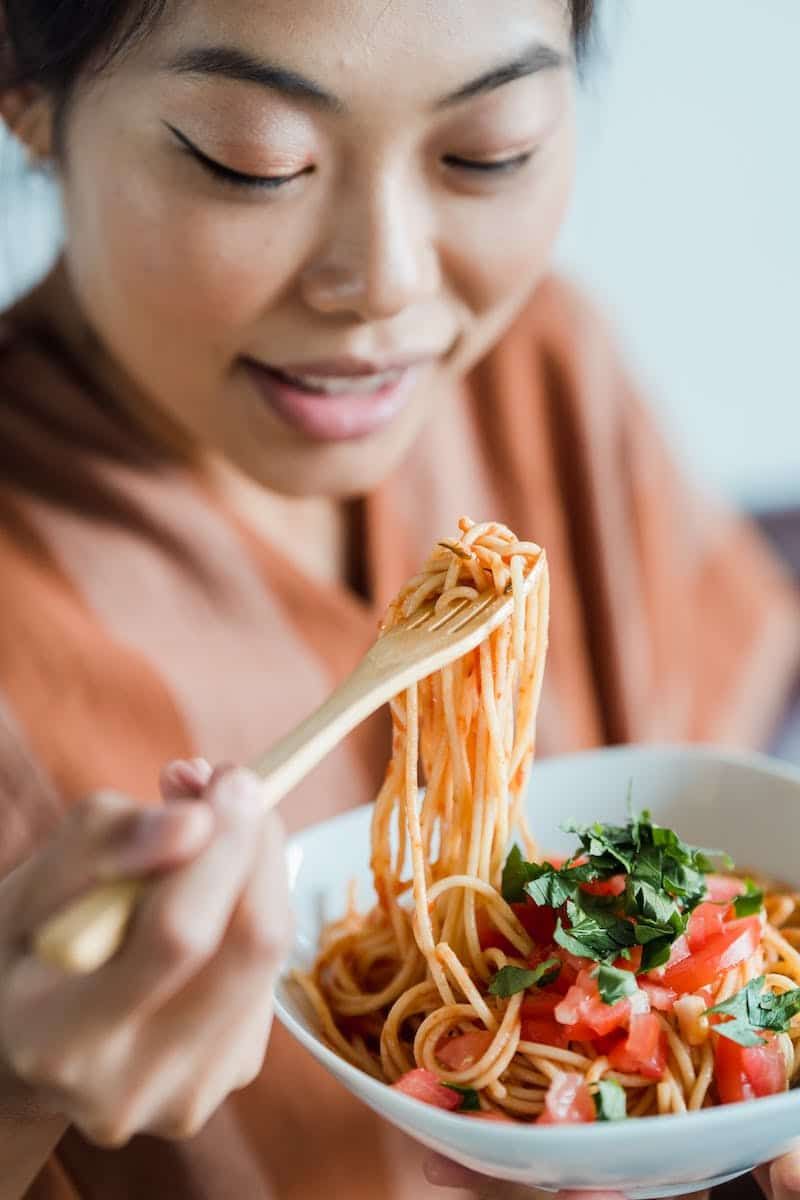
 Plant-Based Whole30
Plant-Based Whole30
Your keys to a successful Whole30
reintroduction
The next step in your Plant-Based Whole30 experience

Your Whole30 success depends on reintroduction
Throughout your Plant-Based Whole30 elimination, you’ve likely experienced improvements in your energy, sleep, mental health, digestion, cravings, and other symptoms. This suggests that removing or limiting at least some of these foods is the key to feeling and living your best. But how will you know which foods were having a negative impact?
During reintroduction, you’ll add those eliminated food groups back into your diet—one at a time, carefully and systematically, like a scientific experiment. Pay careful attention during this phase of the program, because this is where you learn how the reintroduction of these foods impacts your physical and mental health. You’ll then be able to compare how you felt without these foods to how you feel when you reintroduce them.
Your Plant-Based Whole30 reintroduction will shine a spotlight on the specific foods that lead to unwanted symptoms, energy slumps, cravings, and digestive distress in your unique body. This is invaluable information—and it will serve you well for the rest of your life in your food freedom.
Plant-Based reintroduction basics
Follow one of our Plant-Based Whole30 reintroduction schedules below. Or, create your own schedule and incorporate food groups in whatever order you choose. Just remember to bring back only one food group at a time, and return to your Plant-Based Whole30 elimination for 2-3 days between each reintroduction group.
Your Plant-Based Whole30 is the path to a joyful, sustainable, liberating way of eating
After reintroduction, you’ll know how to include delicious foods, family favorites, and culturally significant dishes in your diet in a way that still supports your health goals.
Plant-Based Whole30 reintroduction schedules
You’ll see two Plant-Based Whole30 reintroduction schedules laid out below. The first includes no animal products, and only reintroduces the plant-based foods you’ve eliminated. The second includes dairy and/or animal protein, for those who want to evaluate the impact of adding animal products to their plant-forward diet.
- Added sugar (optional): cane sugar, brown sugar, honey, maple syrup, date paste, coconut sugar, monk fruit, stevia, erythritol, etc.
- Non-gluten grains: corn, popcorn, or 100% corn tortillas; gluten-free oatmeal; rice or corn-based cereal; ancient grains (gluten-free) bread or tortillas; rice crackers or rice cakes; rice (any variety); quinoa or buckwheat.
- Gluten grains: whole-grain bread, wraps, or tortillas; wheat-containing pasta or couscous; wheat-containing crackers; whole-grain cereal.
- Alcohol (optional): beer, hard cider, hard kombucha, wine, champagne, vodka, tequila, gin, rum, or any distilled spirit.
- Days 1–30: Plant-Based Whole30 elimination
- Day 31 (optional): Reintroduce added sugar all by itself
- Days 32–33: Back to Plant-Based Whole30 elimination
- Day 34: Reintroduce non-gluten grains all by themselves
- Days 35–36: Back to Plant-Based Whole30 elimination
- Day 37: Reintroduce gluten grains all by themselves
- Day 38–39: Back to Plant-Based Whole30 elimination
- Day 40 (optional): Reintroduce alcohol all by itself
- Day 41-42: Back to Plant-Based Whole30 elimination
- Added sugar (optional): cane sugar, brown sugar, honey, maple syrup, date paste, coconut sugar, monk fruit, stevia, erythritol, etc.
- Animal protein: poultry, beef, bison, lamb, chicken, turkey, wild game, pork, fish, shellfish, or eggs.
- Non-gluten grains: corn, popcorn, or 100% corn tortillas; gluten-free oatmeal; rice or corn-based cereal; ancient grains (gluten-free) bread or tortillas; rice crackers or rice cakes; rice (any variety); quinoa or buckwheat.
- Dairy: milk or cream; butter; plain yogurt or kefir; cheese (of any sort); cottage cheese; cream cheese; sour cream; whey protein powder.
- Gluten grains: whole-grain bread, wraps, or tortillas; wheat-containing pasta or couscous; wheat-containing crackers; whole-grain cereal.
- Alcohol (optional): beer, hard cider, hard kombucha, wine, champagne, vodka, tequila, gin, rum, or any distilled spirit.
- Days 1–30: Plant-Based Whole30 elimination
- Day 31 (optional): Reintroduce added sugar all by itself
- Days 32–33: Back to Plant-Based Whole30 elimination
- Day 34: Reintroduce animal proteins all by themselves
- Days 35–36: Back to Plant-Based Whole30 elimination
- Day 37: Reintroduce non-gluten grains all by themselves
- Day 38–39: Back to Plant-Based Whole30 elimination
- Day 40: Reintroduce dairy all by itself
- Day 41-42: Back to Plant-Based Whole30 elimination
- Day 43: Reintroduce gluten grains all by themselves
- Day 44-45: Back to Plant-Based Whole30 elimination
- Day 46 (optional): Reintroduce alcohol all by itself
- Day 47-48: Back to Plant-Based Whole30 elimination

Tips for planning your reintroduction
Outside of Real Plans, your best strategy for reintroduction strategy is adding one food from the reintroduction group to an otherwise Plant-Based Whole30 compatible meal. Add your reintroduction group as a side dish, incorporated into your meal, or as an ingredient in your recipe. We’ll share some inspiration:
- Added sugar: Use sweetened nutpods in your morning coffee, enjoy maple-glazed tofu with your lettuce wrap at lunch, add honey to your mid-afternoon tea, choose a sweetened vegan salad dressing or condiment, top your chickpea salad with candied pecans.
- Non-gluten grains: Add oatmeal as a side to your tofu scramble, wrap your tempeh and fajita veggies in a corn tortilla, add a side of rice or quinoa to your plant-based dinner.
- Gluten grains: Include toast or low-sugar cereal with your breakfast, use a whole grain wrap for lunch, serve your lentils and marinara sauce over whole grain pasta.
- Alcohol: Enjoy 1-2 glasses of your alcohol of choice with one otherwise Plant-Based Whole30 compatible meal that day.
What could happen during Whole30 reintroduction?
You may reintroduce a certain food or food group and… nothing happens. Your energy stays steady, you sleep just as well, your cravings are still non-existent, and your digestion is still humming. Sometimes, reintroduction reveals positive benefits—a mood boost, more energy, better athletic performance, or deeper sleep. This is exactly the kind of information that helps shape your food freedom, and may be welcomed news, especially if the food you reintroduced was a favorite.
On other occasions, you may reintroduce and realize a few hours later (or the next morning) you are less energetic, you slept less soundly, your cravings are back, your skin broke out, your joints swelled, or your digestion went haywire. That doesn’t automatically mean you should avoid these foods completely! It means you should apply this newfound knowledge to your Food Freedom plan, and include these foods in a way that feels healthy and sustainable to you.
We can’t share everything that could happen when you reintroduce various food groups—the list would be quite long! Various components of different foods interact with your body in a specific fashion unique to you. Big picture, pay attention to any noticeable changes in the way you feel, move, sleep, or think; and pay special attention if you return to feeling not-as-awesome, experience a decline in performance (in your sport or in life), or if negative physical or mental symptoms appear.
Here is a list of factors you could evaluate during the Whole30 reintroduction, to determine if a particular food has a negative impact. (You’ll find even more ideas on your Non-Scale Victories checklist.)
digestion · energy · sleep · cravings · mood · anxiety · attention/focus · self-confidence · skin · allergies · breathing (asthma, congestion) · headaches/migraines · athletic performance and recovery · pain · inflammation · medical symptoms

After reintroduction comes food freedom
The end-goal of your Plant-Based Whole30 journey is to find food freedom. That’s where you use all the information learned during elimination and reintroduction to create your personalized, joyful, sustainable diet, according to your definition of health.
You came to the Whole30 to discover lasting food freedom—and that’s exactly what a careful, conscientious reintroduction can deliver. By the time you’re done, you’ll have all the tools, habits and confidence you need to how create a personalized, joyful, sustainable diet to support your best life.
FAQs
Getting ready for reintroduction? Browse our answers to your most often-asked questions.
As counterintuitive as it may feel after 30 days of elimination, look for products that do contain added sugar for this step. Add sugar or a sweetened dairy-free creamer to your coffee, drink a sugary (or sweetened “diet”) beverage, glaze your tofu in a maple syrup glaze, use a ketchup or salad dressing that contains added sugar, choose a sweetened nut butter, add date paste to your smoothie, or top your salad with sugar-coated pecans.
This is a special situation. As these foods are made from compatible Whole30 ingredients, you might think, “I’ll just eat them as I choose throughout my reintroduction.” However, we’d encourage you to separate these foods from the rest of your reintroduction schedule, and turn them into their own reintroduction category. That means dedicating one day to reintroducing Pancake Rule foods only, then spending 2-3 days back on Whole30 elimination. In addition, pay close attention to how that paleo banana bread, cassava flour tortilla, or serving of potato chips makes you feel. It’s possible that the high quantity of alternative flour found in many of these foods will mess with your digestion, or that the return of tortillas, baked goods, cereal, chips, or fries brings back cravings.




